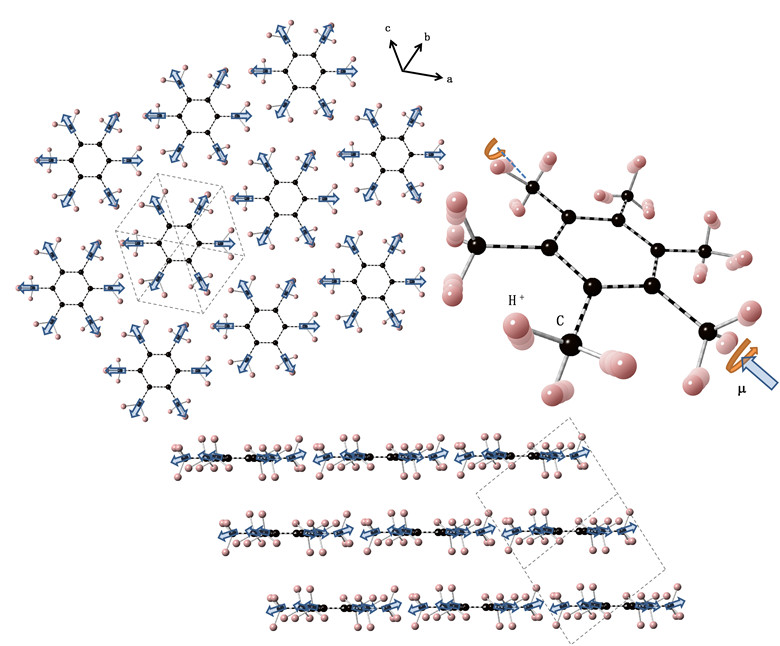我系陈朗课题组晏飞翔博士等在六甲基苯中发现了一种新的基于质子旋转运动的磁性。一般认为磁性有三种:原子核磁矩,电子自旋和轨道磁矩以及电子运动产生的磁矩。物质的各种磁学性质都是这三种磁性相互耦合以及与环境作用的结果。
有机六甲基苯分子晶格中的磁矩排列如图1所示,该现象的临界温度为117 K(图2。揭示了该分子晶体中具有基于甲基同步旋转的宏观量子现象并磁介电耦合效应(图3)。;这一种新的磁性可用于发展新的一代存储器以及通过外磁场操控多种纳米机器。该文章发表于Angewandte Chemie期刊,并被标为VIP论文(Very Important Paper): http://onlinelibrary.wiley.com/doi/10.1002/anie.201707024/full
相关科研工作得到了国家科技部专项,国家自然科学基金委,深圳市科创委基础研究项目,南山区科技局以及南方科技大学的大力支持。

Figure 1: Top left: Hexamethylbenzene, or C6(CH3)6, projected along the [1,1,1] direction in the near cubic phase (below 117 K). Bottom: Basal planes form along the direction perpendicular to the [1,1,1] direction. Top right: Illustration of the protons (H+) undergoing rotational motion within each of their respective methyl groups (CH3). Blue arrows represent the magnetic moment associated to the rotational movement of the protons. 
Figure 2: Molar magnetic susceptibility χmol as a function of temperature under an applied magnetic field of H=2 kOe. Above the near cubic to trigonal phase transition temperature Tc=118 K, χmol is temperature independent. Below Tc, the gearing motion of the protons render χmol to increase with decreasing temperature. Near 20 K, χmol diverges suggestive of an onset of long-range ordering of the magnetic moments of the Me groups in a quasi-antiferromagnetic configuration. Inset:
Figure 3: Top: Real part of the dielectric constant of HMB at 1 kHz, step-down feature at 118 K during warming represents the near cubic to triclinic structural phase transition. Bottom: Imaginary part of the dielectric constant, units in nanoSiemens. Peak near 160 K represents the increase of the periodic potential barrier restricting the molecules to rotate as a whole about their hexad axes. Inset: The sharp peak near 20 K appears to be a first-order phase transition where χmol also begins to diverge.